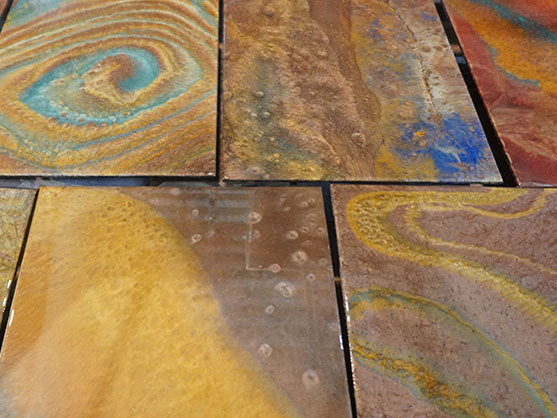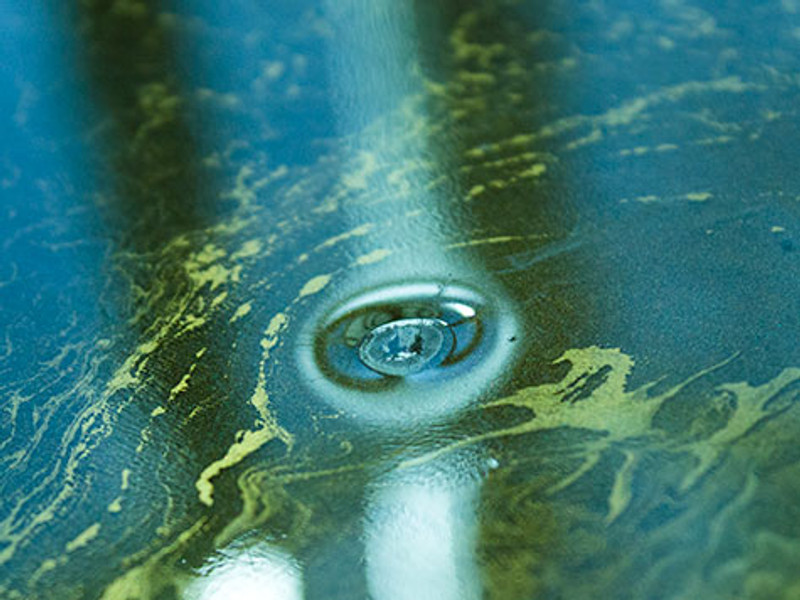There are two different scenarios where you could see dents form in your epoxy countertop. The first, would be immediately after pouring the epoxy, there are dents or divots in the otherwise glossy smooth surface. The second scenario, would be a soft countertop where indentations are left from any heavy item. So, why would the epoxy divot like this when it is supposed to be a durable long-lasting surface? There are specific reasons for why either of these situations would occur in your countertop, and there is also a way to fix them!
To begin, let's start out with the first scenario, where you have fresh divots or dents immediately after pouring the countertop.

Divots, Dents, and Fisheyes in Your Freshly Poured Epoxy Countertop
When you start pouring epoxy onto your countertop or tabletop and notice divots forming in the surface, there are a couple of different reasons why these could be forming. We call a low spot in an otherwise smooth countertop a fisheye.
The most common reason that these occur is when you do not have enough product. Our countertop epoxy self-levels at 1/8” thickness. When you don’t use enough product, it will stretch in areas and cause a fisheye.

Another reason why your wet epoxy might have fisheyes is due to trying to spray the alcohol onto the surface once it has begun to set up. Once the epoxy begins to harden, it does not self-level from the weight of the alcohol. Try spraying your colors when the epoxy is freshly poured to avoid this issue.
The final reason that you might have fisheyes in your freshly poured countertop is if you have any silicone on the countertop surface. The epoxy will not adhere to the silicone and bead up over the surface. It is imperative that you remove any silicone from the surface before pouring the epoxy to avoid this situation. To resolve this, you will need to allow that first pour to cure for 24 hours and then sand the silicone away before pouring a secondary coat.
Indentations from Your Coffee Pot in an Epoxy Countertop
If you set your kitchen appliances back on your countertop within the first two days instead of waiting for the week and they leave indentations, don’t panic! The curing process does continue for the next 30 days and it will become harder. The indentation should smooth out on its’ own.
If you have persistent indentations from even small items, such as a coffee mug, the temperature of the product, room, or surface was too low during the initial pour and the 24 hours afterwards. When the ambient or surface temperature falls below 70 degrees you risk a soft cure. If it is this soft after the first day, it will not harden much beyond that state. When you pour epoxy, make sure that your product, surface, and ambient temperature are all correct, it will save you lots of effort later!
Whether your divots occurred during the pouring process of your countertops, or afterwards due to a soft cure, the solution is always to pour another coat of epoxy. You can pour directly over the previous epoxy pour within 24 hours of the first pour. After that, you will need to sand the surface with a 220 or 320 grit sandpaper lightly to create a chemical bond.
How did your countertop installation go? Call our installation team at (970) 639-9338 and tell us all about it! You can also send us an email with photos of your finished creation to info@countertopepoxy.com.

